- Author: Kathy Keatley Garvey

Fact: Without milkweed, no monarchs.
Yet a milkweed species that's been thriving in California for more than a century is getting a bad rap. The California Department of Food and Agriculture (CDFA), apparently influenced by conservation groups, has categorized Asclepias curassavica, commonly known as tropical milkweed, as "a noxious weed."
That means, among other things, that county agricultural commissioners can ban the sale of tropical milkweed in nurseries. Indeed, several counties, including Marin, Contra Costa, San Mateo and Ventura, already have.
Banned for sale in nurseries? Says entomologist Jeff Smith, who curates the Lepidoptera collection at the Bohart Museum of Entomology: "There are PLENTY of other 'noxious' weeds sold in nurseries (eucalyptus?) that don't seem to raise the hackles of these counties, so it appears more political than factual, and coming up with the supposed pathogens-on-the-plants scenario looks like they searched for an excuse."
Fact: Infected monarch butterflies can deposit microscopic protozoan parasites, Ophryocystis elektroscirrha or OE, on milkweed. That's ALL species of milkweed, not just tropical. Tropical, however, does not die back in the winter in some parts of California, and that, some argue, encourages monarchs to continue to breed and impedes their migration to overwintering sites. Some blame this "continued OE exposure" to the decline of the monarch population.
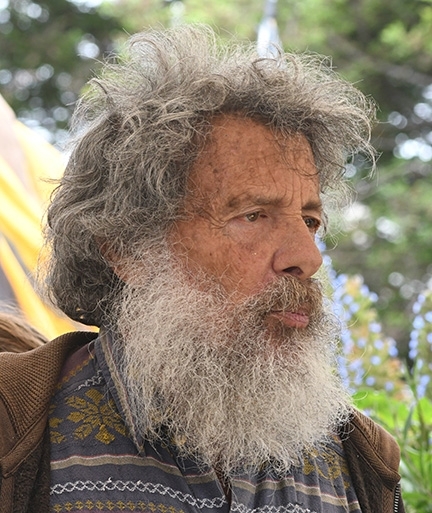
Hugh Dingle, distinguished professor emeritus of entomology, behavior and evolution at UC Davis and now a Marin County resident, is an internationally known expert on animal migration. He's researched animal migration for some 50 years. In the last 20 years or so, he has focused on monarch butterflies. He has authored two editions of Migration: The Biology of Life on the Move and some 100 papers. National Geographic featured Professor Dingle in its cover story on “Great Migrations” in November 2010. LiveScience interviewed him for its November 2010 piece on “Why Do Animals Migrate?” (See news story that includes his biographical information)
Professor Dingle responded to a recent front-page article in a Marin County paper about the ban on tropical milkweed. Banning tropical milkweed will NOT save the monarch, Dingle told the reporter in an email. In fact, he said, the ban will "essentially have zero effect on monarchs" and "no one should rush out and pull out their tropical milkweed as it would be a waste of time and effort. Nurseries should also be able to continue to sell it."
The contents of his email, which the professor shared with Bug Squad, include:
- "There is not enough tropical milkweed planted to have much influence (see the amount of A. syriaca and A. fascicularis throughout the American west not to mention various other species like A. erosa, cordifolia, californica, etc.) Yes, there are parasites on A. curassavica as there are on ALL milkweeds."
- "There are populations of monarchs that are doing just fine feeding exclusively on A. curassavica (e.g. on many Pacific Islands, such as Guam where I have studied them.
- "Migration and the diapause that accompanies it in the fall are determined by shortening photoperiod and temperature (warm temps can override short days hence the issue with climate change). There is no significant influence of food plant."
They Should Know Better! Dingle said some of the advice that CDFA received to categorize A. curassavica as a "noxious weed" came from conservation groups. "They should know better!" he declared.
Art Shapiro, UC Davis distinguished professor of evolution and ecology, has been researching the butterfly populations (including monarchs) of central California for more than 50 years. He co-authored the well-cited research article, "Understanding a Migratory Species in a Changing World: Climatic Effects and Demographic Declines in the Western Monarch Revealed by Four Decades of Intensive Monitoring," published online in March of 2016 in the journal, Population Ecology.
Professor Shapiro shared this email with Bug Squad:
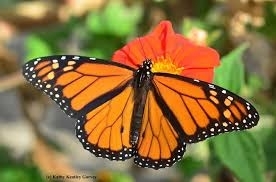
So, What Happened? We asked Professor Dingle how tropical milkweed went from total acceptance to a bad reputation. "I don't know why tropical milkweed got such a bad reputation," he responded in an email. "A couple of possibilities: in some places tropical milkweed seems to have more of the Oe parasite than temperate species which die back in winter--ergo, butterflies pick up more parasites (Fact is not enough to have much influence on migration or breeding although in some places there can be a little. But over the whole range of monarchs . . .naaah!) Second possibility is since tropical is around longer, butterflies can feed on it longer and so might 'keep butterflies from migrating.' BUT...migration is a photoperiodic phenomenon (occurs with short days) so feeding is irrelevant. Besides during migration monarchs will feed on almost any plant with nectaring flowers!"
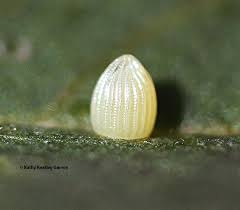
"Monarch butterflies are dependent upon milkweed as its host plant. They lay their eggs on milkweed and their caterpillars eat milkweed. In the past, monarchs in California spent the winter roosting in trees along the coast of California. They did not breed during the winter. They moved inland during summer months where they bred."
"Because of global warming, monarchs have begun to breed during the winter months in California and the existence of tropical milkweed in gardens in coastal California has made that possible...The Nature Police have succeeded in getting the sale of tropical milkweed banned in Contra Costa, Marin, San Mateo and Ventura counties. Academic entomologists have pushed back against this harmful ban in an article published by The Monterey Herald, San Jose Mercury, Marin Independent Journal, and East Bay Times.
The milliontrees.me website also points out that:
- Hugh Dingle, a retired University of California at Davis entomology professor who has studied monarch butterfly migration for more than two decades, said the bans are “basically a wasted effort” and that the focus should be on larger threats such as pesticide and herbicide use. All species of milkweed carry parasites that can affect monarch populations."
- “Arthur Shapiro, a UC Davis professor who has studied monarch butterflies for the past six decades, described the rationale behind the bans as “hogwash.” Shapiro, Dingle and other researchers said winter breeding among monarch butterflies is a relatively new behavior and one influenced by warmer winter temperatures caused by climate change.”
- “David James, an associate entomology professor at Washington State University who has studied monarch butterfly breeding and migration in the Bay Area, said there is a case to be made about the tropical milkweed as being a vital resource for the monarchs in a changing climate.”
- “Leslie McGinnis, a UC Berkeley doctoral candidate studying monarch populations and working with gardeners in the East Bay, said the bans take a 'simplistic view' of the threats that monarchs face, including the fact that many native milkweed plants supplied to nurseries can also be sprayed with pesticides. The bans, she said, can work to disenfranchise or demonize people that have tropical milkweed who instead could be partners in working to help restore monarch populations.”
Indeed, the website minces no words: "Native plant advocates are wedded to a past that is long gone. The climate has changed and it will continue to change. Monarchs and other animals are trying to adapt to the changed conditions. Their survival depends on their ability to adapt. The native plant movement has become a form of climate change denial. Their irrational hatred of introduced plants is damaging the environment with herbicides and harming wildlife. There is no evidence that tropical milkweed is harmful to monarchs."
Mona Miller, who administers the popular Facebook page, Creating Habitat For Butterflies, Moths, & Pollinators, related in a recent post: "Monarch are resilient insects, they have so many strategies to increase their population, but they do have their limits. We must stop pulling out tropical milkweed and cutting it back. Washing off all milkweed should suffice to clean off the OE spores. I emailed several scientists, no one could tell me that OE (Ophryocystis elektroscirrha is a protozoan parasite) has any way to attach to milkweed leaves other than getting caught in the hairs. Tropical milkweed has smooth leaves. Tropical milkweed has been in California since 1909, that is over 100 years. Totally eradicating tropical milkweed, just like totally eradicating all the eucalyptus trees, would have a detrimental effect on the monarch population, perhaps it already has." (Both eucalyptus and tropical milkweed are non-natives.)
Personal Experience. As an aside, our family has provided several species of milkweed in our pollinator garden in Vacaville for more than a decade. The species now include narrowleaf milkweed, A. fascicularis; butterflyweed, A. tuberosa; showy milkweed, A. speciosa; and tropical, A. curassavica. One season we counted more than 300 eggs and caterpillars on the milkweed. Almost all favored A. curassavica. Second choice: A. fascicularis. Some scientists say that perhaps tropical milkweed offers more toxins, and monarchs "know what they want and need."
We continue to plant both natives and non-natives in our thriving garden. The practice now seems so highly controversial that sometimes we feel as if we must mark ourselves "safe" from negativity. But as Professor Shapiro told Bay Nature in June 2022: "I am sick to death of being told you must use natives, especially if a butterfly has no more interest in it than a fire hydrant."
Additional Resources:
- Milliontrees.me:
The Consequences of Putting Plants into 'Native' Strait-Jackets - "Monarch Butterfly Experts Fault Marin Tropical Milkweed Ban," published in, among others:
Ukiah Daily Journal
Marin Independent Journal
Chronicles Live - Xerces Society of Invertebrate Conservation
Monarchs in Decline
Native Milkweeds - Bug Squad:
What's Happening with Our Western Monarch?
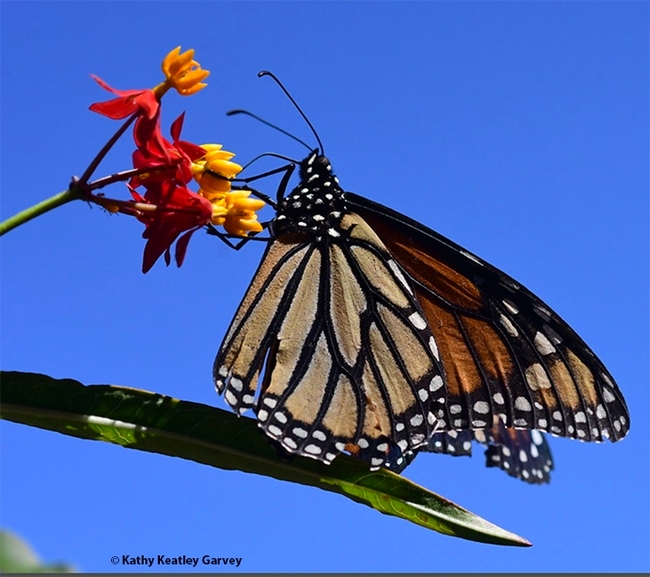
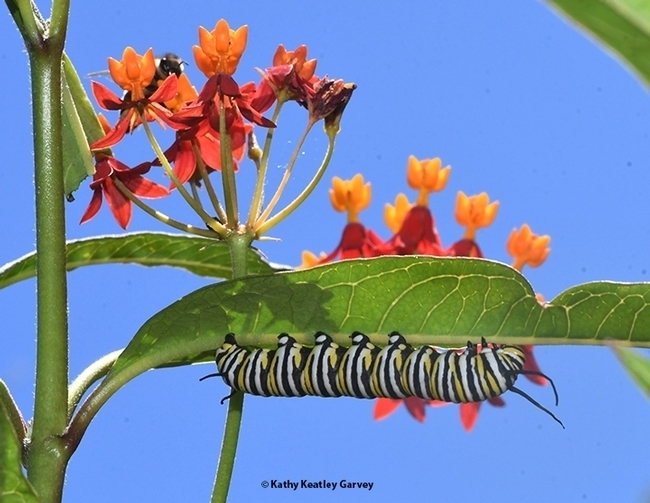
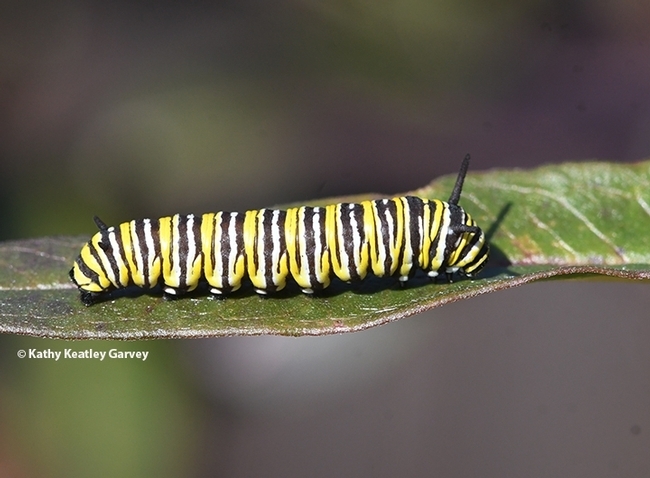
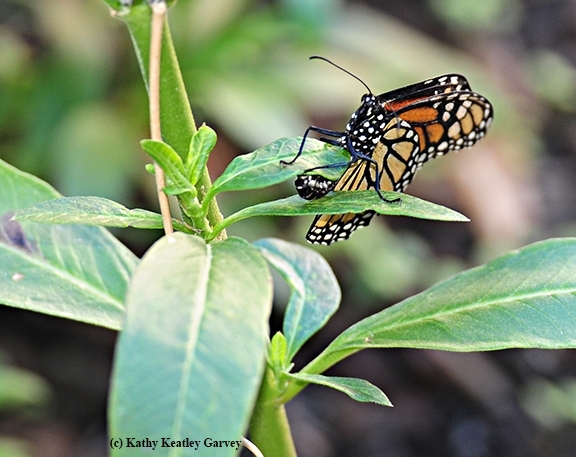



Then come claims that native plants feed "local" insects better. Really? Where is the science backing this. Is it a difference in the chemical composition of "nectar"? Or the flower shape of this plant vs that? Or the time of observation of feeding (one day vs. the next, morning vs. afternoon). I've spent inordinate hours watching pollinators on asters, native-ish to Georgia (New England asters - are they really native here? unclear) vs. Japanese asters. The native bees love them all. They tend to dine off a single kind at a time. If you measured on Tuesday, it might seem they eschewed the native, but on Wednesday, they might cover the imported and ignore the native. What to make of it????
One caveat to the article above. I view the citation to milliontrees.me with skepticism since the authors do not even seem to understand what the word "perennial" means, appearing to use it to distinguish between evergreen and deciduous perennials. This makes me doubt them as a valid source of information.
Otherwise, yes, this banning of tropical milkweed (and discouragement to using it in places where it would be deciduous because of the alleged threat) seems to be an overreaction on the scale of one bird died from gorging on Nandina berries; thus Nandina berries are toxic to birds. T'aint so. (But invasive, well, that's a different issue.)
>>This paper describes an experiment that was designed to test what happens to larvae that eat different milkweed species, and specifically, what is the effect of these milkweeds on the metabolism of adult monarchs. This is a very interesting question, which has not specifically been explored before, but has great importance for the long-distance migration of monarchs.<<
https://www.monarchscience.org/single-post/larvae-reared-on-tropical-milkweed-become-adults-with-the-wrong-metabolism-for-migration
Andy Davis wrote his opinion to this research*. The reality is that tropical milkweed an exotic and showy milkweed a native had the same energy cost.
*“Impacts of larval host plant species on dispersal traits and free-flight energetics of adult butterflies”
https://www.nature.com/articles/s42003-022-03396-8
I usually read the abstract and then the results. This is in the results: “Specifically, mean flight muscle ratios of adults produced by larvae reared on tropical milkweed A. curassavica (35.4 ± 2.0%, ? = 19) and showy milkweed A. speciosa (33.8 ± 2.2%, ? = 15) were significantly higher (cur-sul: P = 0.0008, cur-ver: P = 0.017; spe-sul: P = 0.01, respectively; see Fig. 1) than those of adults reared on prairie milkweed A. sullivantii (22.5 ± 2.2%, ? = 15) and whorled milkweed A. verticillata (24.2 ± 2.6%, ? = 11).”
“Specifically, adults reared on A. speciosa had a significantly higher normalized RMR than those reared on A. sullivantii (P = 0.0075), A. verticillata (P = 0.0283), and A. syriaca (P = 0.0276), while those reared on A. curassavica had significantly higher normalized resting metabolic rate than A. sullivantii (P = 0.0181). These results indicate that in addition to energy expenditure during flight, larval milkweed host species affect the energetic maintenance costs of adult monarchs.”
Looks like tropical milkweed isn’t as bad as people have been pushing.
Second, studies have demonstrated that Asclepias curavassica does in fact induce reproductivity....
And other studies have shown rearing uninfected Monarchs (OE) on A. curavassica are smaller... making migration more difficult. These experts don't seem to have done even a minor review of existing studies in formulating this OPINION PIECE.
There was just a discussion on the Monarch Watch email list that cleared up some misinformation with regards to tropical milkweed. Tropical milkweed doesn’t stop the migration. It is in the October thread, the thread starts with “This parasite…..” https://lists.ku.edu/pipermail/dplex-l/2022-October/thread.html
I personally have used tropicals to raise Monarchs and have found that as a food it far exceeds the nutritional value of native milkweeds.
I do know tropical milkweed, Asclepias curassavica has been around in FL since the 1940s and in the Caribbean since 1860s.
Records on the CalFlora site, one for 1909 for San Luis Obispo [That's over 100 years, and only now is it being blamed for causing an OE outbreak.] OMG, back then there were tons of Monarchs.
All the records: http://ucjeps.berkeley.edu/cgi-bin/get_consort.pl?dups=CDA5518%20SD239561%20UCR195997%20SD240828%20UCR235513%20UCR179772%20UCR194084%20UCR262010%20UC455085%20UC1313033
1909 record: http://ucjeps.berkeley.edu/cgi-bin/new_detail.pl?UC455085&YF=0
More Information: http://ucjeps.berkeley.edu/cgi-bin/get_cpn.pl?Asclepias+curassavica
It is considered a cultivated plant and not naturalized.
Probably some missionary brought it to CA, they took it to islands along the Caribbean and to New Zealand.
I emailed Dr. Hunter at the Univ. of MI [involved in several research articles on OE], I really think considering that OE has many strains that unless they can identify which strains they are using and which ones are more lethal that they shouldn't be doing experiments and come up with generic results. Saying something is climate related, when it could be strain related or some other issue like another disease causing it to be more lethal. This is why I can't logically buy all this science at times. I see flaws in the experiments.
Edith Smith at Shady Oaks Butterfly Farm had Nosema in her stock. She said that Nosema suppresses OE. I used to get stock from her to jump start my local population. After she emailed me telling me about the Nosema suppressing OE, I emailed back asking her whether that is what the stock she sent me had. I stopped ordering. I decided I was just jump starting diseases with butterfly breeder stock. This was back in 2007. I got caught in Dr. Lincoln Brower’s student’s survey on commercial breeders on OE. The grad student did a little sting as part of a graduate research project. Yes she did find several breeders shipping Monarchs with OE. I had ordered stock from Edith and then shipped some to a breeder in Charlottesville, VA. That breeder was supposed to give adults to Dr. Brower. The deal was that I would send her extra caterpillars. The caterpillars that I sent were 2-3 instar. Caterpillars don’t share OE between them. OE is contracted from the mother, environment (dirty cage or other equipment), or food. I learned a bit about OE. Dr. Brower and his wife Linda Fink were helpful sharing their results of those adults. Some had heavy OE. But, it only takes one spore to multiply to hundreds.
Of course, Dr. Hunter also did research on the medicinal value of tropical milkweed attributing it to giving both Monarch parents and offspring a resistance to OE.
Asclepias curassavica is the species of milkweed used in the study. It was tested against a native with high toxicity, Asclepias incarnata, Swamp milkweed.
“Monarch butterflies appear to use medicinal plants to treat their offspring for disease, research by biologists at the University of Michigan and Emory University shows.” We have shown that some species of milkweed—the larva’s food plants—can reduce parasite infection in the monarchs,” said Jaap de Roode, the Emory evolutionary biologist who led the study. “And we have also found that infected female butterflies prefer to lay their eggs on plants that will make their offspring less sick, suggesting that monarchs have evolved the ability to medicate their offspring.” Few studies have been done on self-medication by animals, but some scientists have theorized that the practice may be more widespread than we realize.” Several criteria must be met in order to demonstrate that self-medication actually is occurring,” said U-M chemical ecologist Mark Hunter, who collaborated with de Roode’s group on the research. “In this study, all of those criteria were met, making it one of the first clear demonstrations of self-medication in an animal. In addition, it’s the first example of trans-generational medication, with the mother’s behavior benefiting her offspring.”’ https://michigantoday.umich.edu/2010/11/10/a7904/
Tropical milkweed is native to Mexico and Central America. It is considered an introduced species in the United States. It dies back in the northern states, but is a perennial in southern states.
https://www.cabi.org/isc/datasheet/7248 [current link]
Invasive Species Compendium Asclepias curassavica
http://www.ars-grin.gov/cgi-bin/npgs/html/taxon.pl?4469 [This link no longer works, but I had copied this information from this link.]
“Asclepias curassavica
Distributional range:
Native:
NORTHERN AMERICA
Northern Mexico: Mexico - Baja Sur, Nuevo Leon, San Luis Potosi,
Sinaloa, Tamaulipas
Southern Mexico: Mexico - Campeche, Chiapas, Colima, Guanajuato,
Guerrero, Hidalgo, Jalisco, Mexico, Michoacan, Morelos, Nayarit,
Oaxaca, Puebla, Queretaro, Quintana Roo, Tabasco, Veracruz, Yucatan
SOUTHERN AMERICA
Caribbean: Antigua and Barbuda; Bahamas; Barbados; Bermuda; Cayman
Islands; Cuba; Dominica; Dominican Republic; Guadeloupe; Haiti;
Jamaica; Martinique; Montserrat;Netherlands Antilles - Saba; Puerto
Rico; St. Vincent and Grenadines; Virgin Islands (British); Virgin
Islands (U.S.)
Mesoamerica: Belize; Costa Rica; El Salvador; Guatemala; Honduras;
Nicaragua; Panama
Northern South America: French Guiana; Guyana; Suriname; Venezuela
Brazil: Brazil
Western South America: Bolivia; Colombia; Ecuador; Peru
Southern South America: Argentina; Chile [n.]; Paraguay"
http://www.conabio.gob.mx/malezasdemexico/asclepiadaceae/asclepias-curassavica/fichas/ficha.htm#2
“Origen y distribución geográfica
Distribution in Mexico [historical records of a native plant]
Is registered in Aguascalientes, Baja California Norte, Baja
California Sur, Campeche, Chiapas, Colima, Guerrero, Hidalgo, Jalisco,
Michoacan [state where the Monarch reserves are located], Morelos,
Nayarit, Nuevo Leon, Oaxaca, Queretaro, Quintana Roo, Sinaloa,
Tabasco, Tamaulipas, Veracruz and Yucatán (Villaseñor and Espinosa,
1998).
Immigration status in Mexico
Native.”
Tropical milkweed is native right across the border in CA and TX. Frankly both Monarchs and milkweed evolved over time to head north. Tropical could have over time evolved to transplant itself over the border naturally. Why can’t we label it as a naturalized or cultivated plant instead of invasive?